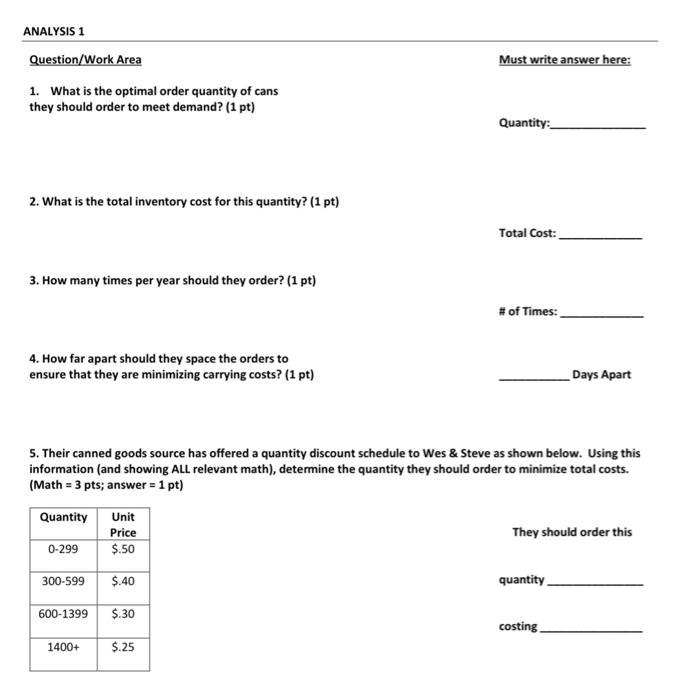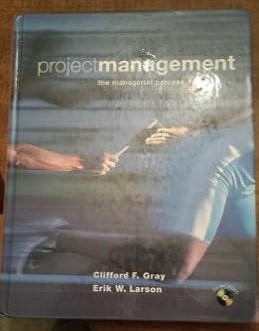Wes and Steve purchase many ingredients to produce the lunch truck foods in their central kitchen. In particular, they buy canned garbanzo beans for their homemade hummus production. The kitchen uses 100 cans each week when preparing salads and has estimated that carrying costs for the beans are $.60/ can/year and ordering costs are $15 per order. The company operates 350 days/year. Use this information to answer the questions on page 2. 1. What is the optimal order quantity of cans they should order to meet demand? (1 pt) Quantity: 2. What is the total inventory cost for this quantity? (1 pt) Total Cost: 3. How many times per year should they order? (1 pt) \# of Times: 4. How far apart should they space the orders to ensure that they are minimizing carrying costs? (1 pt) Days Apart 5. Their canned goods source has offered a quantity discount schedule to Wes \& Steve as shown below. Using this information (and showing ALL relevant math), determine the quantity they should order to minimize total costs. (Math = 3 pts; answer =1 pt) They should order this quantity costing Wes and Steve purchase many ingredients to produce the lunch truck foods in their central kitchen. In particular, they buy canned garbanzo beans for their homemade hummus production. The kitchen uses 100 cans each week when preparing salads and has estimated that carrying costs for the beans are $.60/ can/year and ordering costs are $15 per order. The company operates 350 days/year. Use this information to answer the questions on page 2. 1. What is the optimal order quantity of cans they should order to meet demand? (1 pt) Quantity: 2. What is the total inventory cost for this quantity? (1 pt) Total Cost: 3. How many times per year should they order? (1 pt) \# of Times: 4. How far apart should they space the orders to ensure that they are minimizing carrying costs? (1 pt) Days Apart 5. Their canned goods source has offered a quantity discount schedule to Wes \& Steve as shown below. Using this information (and showing ALL relevant math), determine the quantity they should order to minimize total costs. (Math = 3 pts; answer =1 pt) They should order this quantity costing








